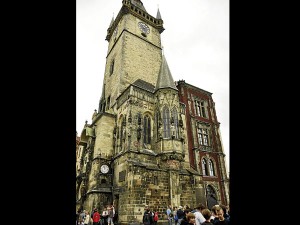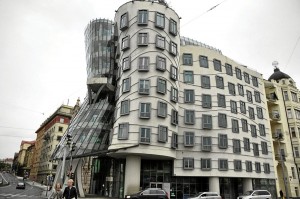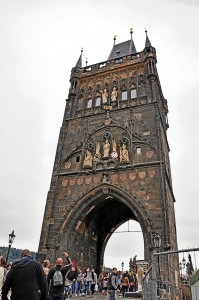Prague’s structures let you travel back in time
YOU WANT to see really old architectural landmarks? Go to Europe. Points of interest there not only are centuries old, they are loaded with history and technical expertise well ahead of their time, enriching not only our digital SLRs, but also our sense of history.
The past three weeks, this writer went on a whirlwind tour of seven countries (a total of 20 destinations) in Europe, capturing images of architectural landmarks and absorbing the rich history that went into their construction, or destruction and eventual restoration. The pictures not only speak a thousand words, but travel back hundreds of years.
First stop was the Old Town Square in Prague, where almost every medieval structure goes beyond words for this first-time gawker.
Old Town Hall Tower
The throng of tourists won’t deter you from being able to wonder at the towering structure, no matter where your vantage point is. The imposing landmark together with its Astronomical Clock was probably the top crowd-drawer in the four days that this writer spent in the Czech Republic’s capital, strolling on the Old Town Square. The Astronomical Clock, built into one side of the Old Town Hall Tower, dates from the 15th century, according to the Prague Experience (a leading Prague city guide and booking service). Below the Astronomical Clock are 12 medallions bearing the signs of the zodiac, added by Josef Manes in 1865.
Article continues after this advertisementThe Old Town Hall Tower, built in 1338, is visually striking. Inside is a staircase and an elevator. For a fee, visitors can climb or ride to the top to experience terrific views over the Old Town Square and the rest of the Old Town.
Article continues after this advertisementIn 1364, the Old Town Hall Tower was adjoined to a private house, which in turn was knocked into other houses beside it. This amalgamation of buildings became known as the Old Town Hall. Extensive renovation in 1470 further integrated the various houses of the Old Town Hall, and refurbished the entirety in Gothic style.
Today, the Old Town Hall hosts civic ceremonies in its many rooms, and also houses the primary Prague Tourist Information Centre.
The Prague Charles’ Bridge
This bridge is another crowd drawer and not just a pedestrian zone. Aside from tourists who would stay for hours for pictures, Czech artists, souvenir vendors and even musicians flock the landmark. This stone Gothic bridge that connects the Prague Old Town (Stare Mesto) with Prague Lesser Town (Mala Strana), is 515 meters long and 9.5 meters wide and about 13 meters above the Vltava river. The Charming Prague Hotels (a service assisting tourists on Prague hotel accommodations) also reveal that this bridge was built during the time of the Czech king and Holy Roman Emperor Charles IV in 1357 in place of another stone bridge, the Judith Bridge (built in 1172), the first stone bridge over the Vltava river in Prague which collapsed in a flood in 1342.
Czech sandstone was used to build The Prague Charles Bridge, and it is said that egg yolks were used to strengthen its construction (modern laboratory tests do indicate that organic ingredients were, indeed, used in the mortar). It does seem to be an inspired move, as the Prague Charles Bridge has survived many floods, including the one in August 2002, when the country experienced the worst flooding in 500 years.
But the Prague Charles Bridge has not been left unscathed. In 1432, a flood damaged three pillars, and in 1496 the third arch from the Prague Old Town side was damaged after one of the pillars were undermined by the water stream (the repairs were finished in 1503).
The Dancing House
The Dancing House is not without its share of controversy. Separated from the landmark structures of the Old Town Square, at the corner of Jirasek Square and Rasin Quay alongside the river Vltava, this structure is said to represent a man and a woman dancing, according to Prague.cz. Years ago, this was regarded a controversial work, yet hailed as one of the most acclaimed modern buildings in Prague. It was awarded the design of the year 1996 by Time magazine.
Critics, on the other hand, have panned it for sticking out like sore thumb, not fitting into its surroundings where various art noveau houses stand. The unusual shape of the building has also been in dispute. Despite these, or maybe because of them, the Dancing House continues to be a top tourist draw, and certainly one of the most interesting turn-of-the-20th-century buildings in Prague.
The building was closed at the time that this writer took the picture. Some tourists in the area said only tenants are allowed to enter the building. The interior of the Dancing House (according to, who else, the tenants), was partly designed by the London architect Eva Jiricna (who had Czech origins). Offices are predominant in the 9-story house, and there is a French restaurant with a beautiful view of Prague at the top.
photos by Tessa R. Salazar


